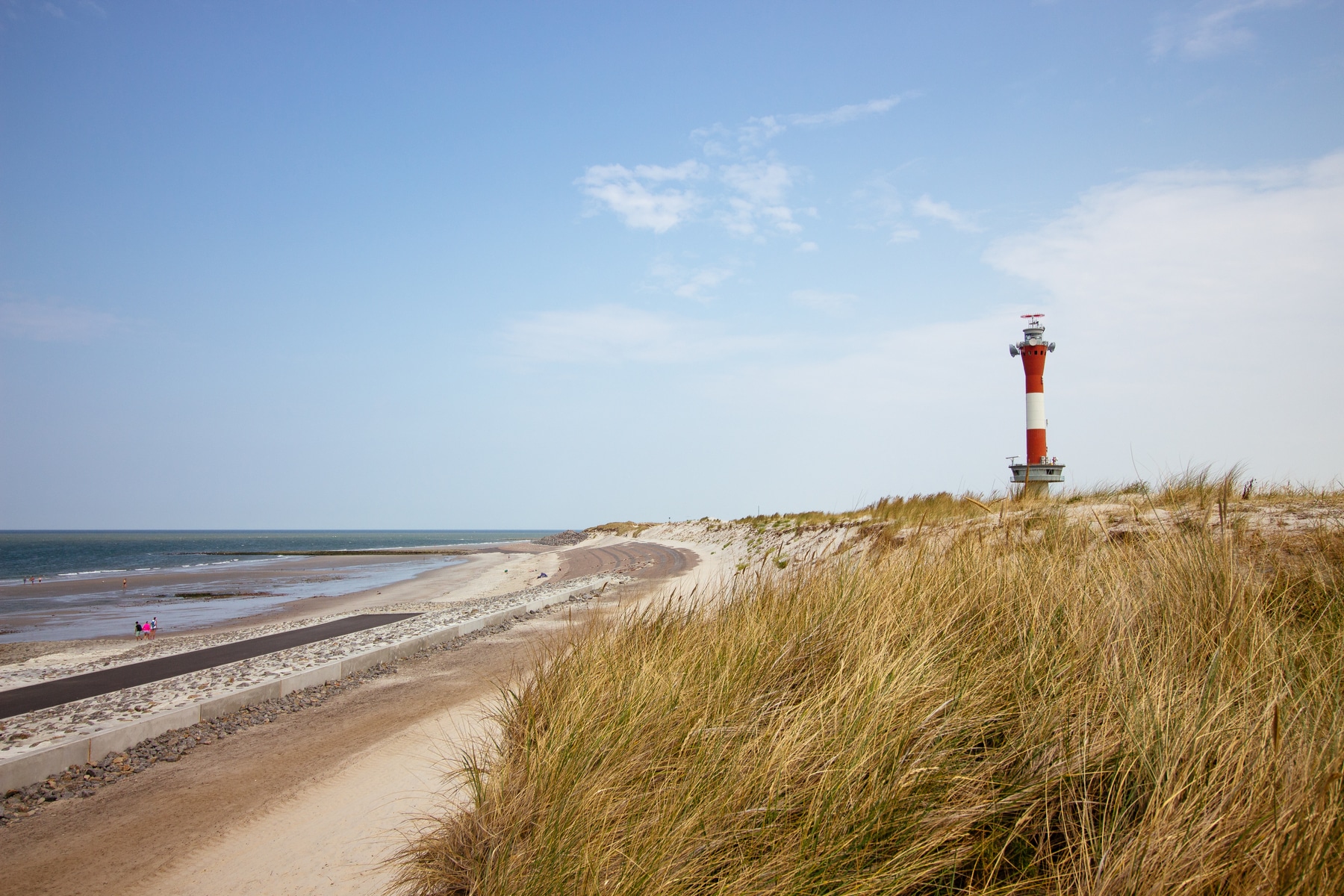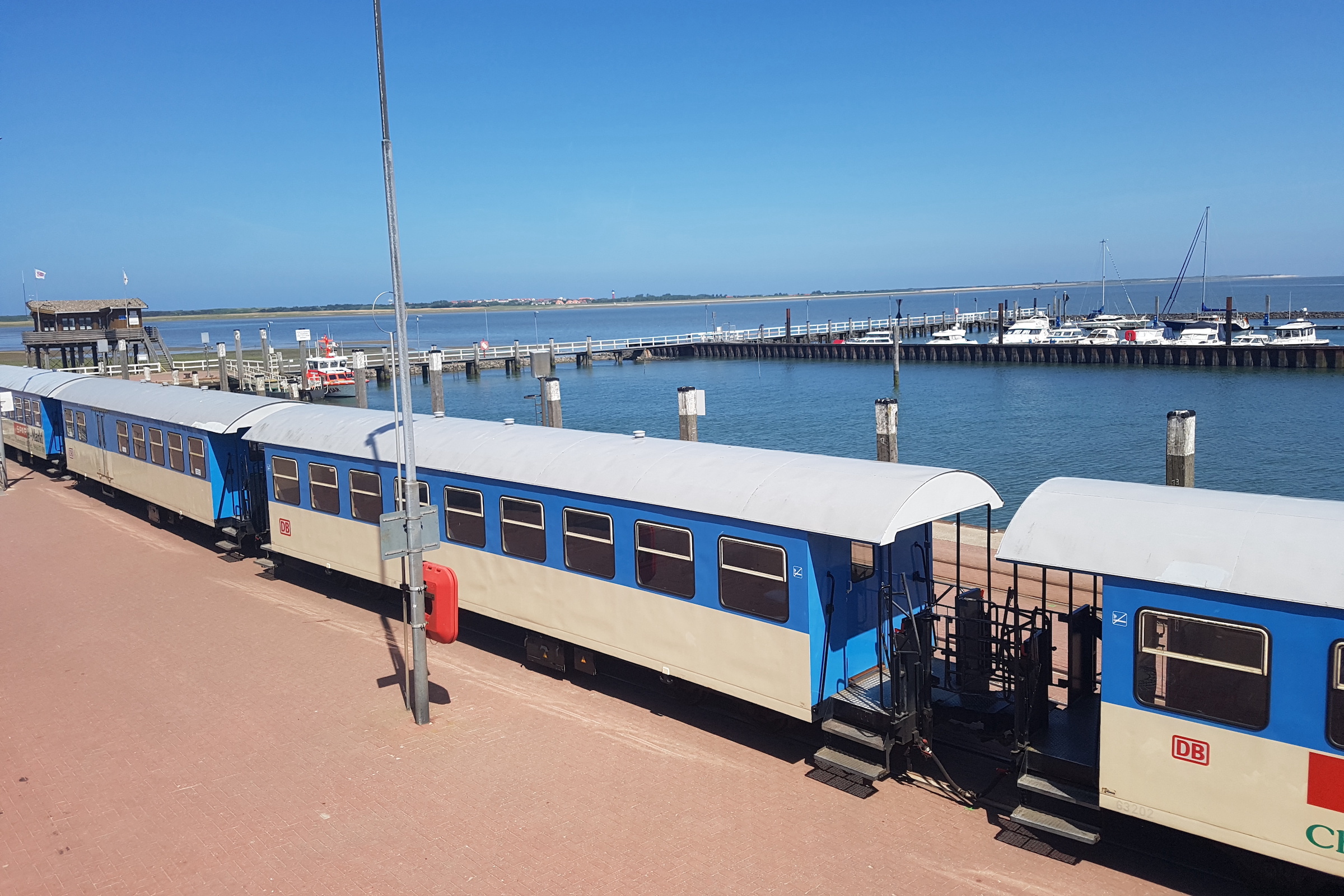- Home ›
- Germany ›
- Lower Saxony ›
- Islands
The island of Wangerooge is located only about seven to eight kilometers away from the mainland on the coast of Lower Saxony and is the second smallest inhabited island of the East Frisian island group after Baltrum. Wangerooge has an area of just under eight square kilometers, which is permanently inhabited by about 1300 islanders, and is located in the middle of a large national park. The island has been settled since the 13th century and has a varied history. As early as 1804, the easternmost island of the East Frisian Islands was one of the first to bear the additional title of "seaside resort" - a heritage that has shaped Wangerooge to this day. However, the North Sea resort of Wangerooge does not belong to East Frisia, but for historical reasons is part of the Frisian Jeverland. The idyllic island also includes the small uninhabited neighboring island of Minsener Oog. From the air, Wangerooge itself resembles a seahorse lying on its side and extends in an east-westerly direction over a total length of 8.5 kilometers. The north-south extension is at most 1.2 to 2.2 kilometers.
Wangerooge is car-free
With a few exceptions, cars are not allowed on the island of Wangerooge - a fact that makes a visit to the island particularly appealing. Visitors can park their cars at the harbor in Harlesiel on the mainland and take the ferry to the island. The ferry's travel times depend on the tides, as at low tide it would hit sandbanks due to the low tide. The crossing takes about 50 minutes. Traditions suggest that Wangerooge, like the neighboring island of Minsener Org, could be reached on dry land in ancient times. Visitors can explore the island on foot, by bicycle, on horseback or with the island's special attraction - the island train. The island has a sandy beach about 100 meters wide and three kilometers long on its northern side, which slowly turns into a 500 meters wide and three kilometers long area of dunes and sand deposits on the east. On the island there are also two other beaches of half a kilometer to one kilometer in length. In the south of the island you will find the Wadden Sea, which is a protected area and, like the entire island itself, belongs to the Lower Saxony Wadden Sea National Park. At 17 meters above sea level, Wangeroge's lookout dune is the highest natural elevation on the island.
Changing history
According to the old Germanic words "wanga" for meadow and "oog" for island, you can still find breathtaking untouched nature with a rich variety of flora and fauna on Wangerooge. A paradise for nature-loving hikers and interested animal lovers. However, since its name was given several centuries ago, the island has often changed its outer appearance: The side of the islet facing the open sea is constantly eroded by the strong ocean currents and biting winds. The eroded parts of the land, in turn, reattach to the beach in the eastern part of the island, causing the island to gradually change its shape and shift its position in the sea. Due to the permanent shifting of land, unfortunately no prehistoric finds can be found on Wangerooge anymore, as they have been washed into the open sea by the tides.
Today, Wangerooge is protected from the sea current, winds and swells as well as from storm tides by kilometers of revetments. The revetments, together with the dunes, are the most important cornerstones in the defense against floods, which is why trespassing is not permitted. Moreover, the largest groyne structure on the German North Sea coast is located on Wangerooge. Buhne H is a dike about six kilometers long and six meters high that serves to secure and reclaim land. Despite the imposing structure, several tons of sand have to be dumped on the seaward side of the island every year.
Hospitality is a tradition on Wangerooge
The inhabitants of Wangerooge have maintained a particularly hospitable tradition for centuries and are happy to welcome vacationers to their shores. Ever since the founding of the seaside resort of Wangerooge at the beginning of the 19th century, most islanders have offered their guests a cozy hostel for the duration of their vacation.
Enjoying the beneficial climate, the long unspoiled sandy beaches, the unique nature as well as the numerous traditional wellness offers are the main focus on Wangerooge. The island's climate also makes it very interesting for spa guests, who can take advantage of many different spa services offered by the municipality. The weather on Wangerooge is extremely mild and sunny. The high humidity makes the island especially interesting for people suffering from asthma or other lung diseases. Among other things, there is a seawater swimming pool on Wangerooge, which attracts not only on bad weather days with a slide for the action enthusiasts and a sauna for those seeking relaxation. The island is also known for its Thalasso treatments.
Special attractions of Wangeroge
The island train is one of Wangeroge's special attractions and has been transporting islanders and vacationers to their desired destinations for more than 100 years. The island train shuttles back and forth between the central ferry dock and the interior of the island. A ride on the narrow-gauge railroad is worthwhile in any case: On more than five kilometers of track, the view sweeps over endless salt marshes, breathtaking tidal flat landscapes and meter-high dunes. When the 200 or so species of migratory birds use the island as a stopover - around March to May and August to October - it is not only bird enthusiasts who can enjoy the sight of thousands of different migratory birds. The protected meadows and marshlands of the island of Wangerooge are important resting places for many birds on their long journeys, which is why the island train is only allowed to pass them at walking pace. Such an opportunity to observe the birds at close range is rare.
One of the landmarks of Wangerooge is the striking West Tower, which rises about 56 meters into the air and can thus be seen from afar. This tower replaces an older tower that served as a sea and landmark on the west beach from 1597 to 1855. This structure was also used by the islanders as a church. In 1855, however, the first tower was destroyed by a particularly large storm surge and finally demolished in 1914. In 1932, therefore, a new building was erected about 800 meters south of the first tower, based on its historical model. The West Tower offers vacationers very special accommodations in the midst of unspoiled nature - since its inauguration in 1933, it and a modern extension have been used as a youth hostel.
Another landmark is the Old Lighthouse of Wangerooge, which today houses a museum and is the oldest surviving building on the island. The lighthouse went into operation as early as 1856 after the great storm tide of 1855, but the beacon was discontinued at the end of 1969. Today the lighthouse museum houses one of the most beautiful amber collections in Germany. The lighthouse has a full 39 meters and can be climbed on foot by guests who are free from giddiness. From here you can enjoy a view all the way to the neighboring islands and the nearby mainland. The local museum is run with great attention to detail by the islanders themselves.
Like the main village, Wangerooges National Park House is located in the center of the island. The staff of the National Park House "Rose House" in the Rose Park, which has been open all year round since 1989, provides daily information about the special features of the island's flora and fauna and also offers many other interesting events such as cycling tours, themed guided tours around nature. The free visit to the National Park House is especially worthwhile for children as well as for adults. On Wangerooge you can also visit the skeleton of a recently washed up sperm whale, preserved by experts, in the open air.
The so-called "lagoon" offers an experience of a special kind. The lagoon is a saltwater lake located on the west outer groden of the island and was created in 1912 during the extraction of silt and sand for the construction of the dike of Westgroden. The shallow lake has become a true paradise for all kinds of wild birds and salt crystals can often be found on the shores. In the old days of the island, the inhabitants extracted salt in salt pans, which was offered for sale. Today you can find a small guesthouse in the last building still standing.
The numerous visitors of Wangeroge find the last still completely intact wild biotopes on the island. In addition to the aforementioned migratory birds such as Dunlins, Lapwings, Knot and Shelduck, one can find about 80 other native bird species such as rare Kestrels and Short-eared Owls. The island's meadows and woods also provide shelter for rare amphibians such as the natterjack toad and certain species of lizard. In addition, the pearl butterfly, which is almost extinct on the mainland, can still be observed on the island - and with it about 20 other butterfly species.
Leisure activities on the island
On the island there are several youth homes and mother-child homes as well as hotels and guesthouses, which are often run as family businesses and are therefore especially recommended. Sports enthusiasts will also find numerous leisure activities on the East Frisian island. In addition to the riding stable, there is a tennis court, a surfing school as well as a sports field and a golf course on the island. On rainy days, the island cinema can be visited. In the evening hours the beach club with an attached disco attracts.
A special feature is the café "Pudding" on Wangerooge: Located on a dune hill on the beach promenade of the central island village, the café was opened in a former bunker. Other cafés, restaurants, stores and supermarkets can also be found in the island village. The island's harbor also offers boat trips and excursions to the seal sandbanks.


